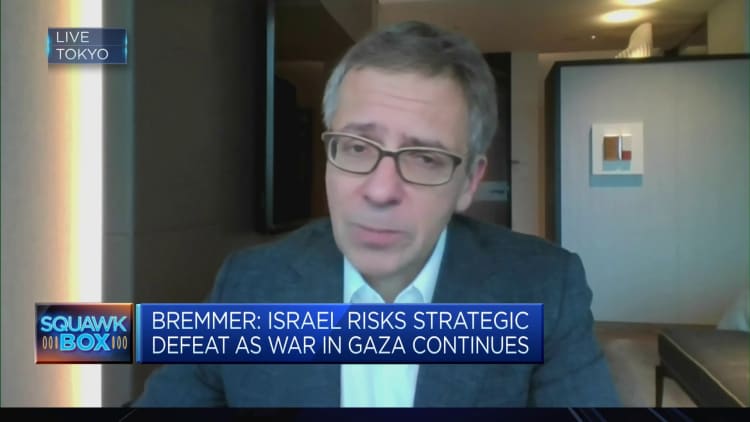Israeli troops and tanks gather near the border with the Gaza Strip on December 3, 2023, after battles resumed between Israel and Hamas militants, as clashes continue between Israel and Hamas militants on December 3, 2023.
Jack Guez | AFP | Getty Images
The Israeli military is expanding its offensive in southern Gaza, where for much of the last two months it has told Palestinian civilians to flee for their safety.
The Israeli Defense Forces ramped up bombardment of Khan Younis, the besieged enclave’s second-largest city, as the United Nations and Israel’s top ally the U.S. stressed the protection of civilians.
At least 50 people were killed Tuesday in Israeli strikes on Khan Younis in the south and the Nuseirat refugee camp in the central Gaza Strip, according to Palestinian news agency Wafa. The outlet and other journalists on the ground reported streams of ambulances rushing people to local hospitals.
It came after U.N. Secretary-General Antonio Guterres urged the prevention of more civilian harm.
“The Secretary-General is extremely alarmed by the resumption of hostilities between Israel and Hamas … For people ordered to evacuate, there is nowhere safe to go and very little to survive on,” U.N. spokesperson Stephane Dujarric said in a statement.
U.S. national security advisor Jake Sullivan, speaking to press, said that Israel has “indicated there are areas where there will be no strike zones, and in those zones we do expect Israel to follow through on not striking.”
State Department spokesman Matthew Miller said that it is “too early to make a definitive assessment … I have not seen evidence that they are intentionally targeting civilians,” but added: “We believe that far too many civilians have been killed.”
He blamed the Palestinian militant group Hamas — whose terror attack on southern Israel on Oct. 7 killed some 1,200 people and triggered the current war — for embedding itself in Gaza’s civilian infrastructure.
Israel’s offensive has killed more than 15,800 people in the Gaza Strip, Palestinian health authorities say.
Of the roughly 240 hostages taken into Gaza by Hamas on Oct. 7, the IDF estimates that 137 hostages remain there, in conditions unknown. It follows hostage swaps for the release of Palestinian prisoners that were carried out during a week-long cease-fire at the end of November.

Israeli forces hit Hezbollah targets in recent strikes on the Israeli-Lebanese border, Israeli government spokesperson Ofir Gendelman told media during a Zoom briefing on Tuesday.
“Like Hamas, Hezbollah also deliberately violated the humanitarian truce, which lasted for an entire week, during which the residents of Lebanon returned with the hope of returning to their normal lives. However, Hezbollah, as usual, did not care and fired missiles at our lands,” he said.
Hezbollah was not a formal party to the Israel-Hamas cease-fire agreement.
“In response to this aggression,” Gendelman added, “our forces struck important targets belonging to this Iranian militia, which is the first and last enemy of Lebanon.”
“As for the war on Hamas, it is expanding,” he added. “We call civilians to safe areas. We hit Hamas targets precisely to save lives … Hamas wants to continue the war.”
Israel’s critics say that there is no safe place for Palestinian civilians to go, as sites where they previously sought refuge are now under attack. Roughly 1.2 million people — more than half of Gaza’s whole population — are now sheltering in Rafah on Gaza’s southern border with Egypt. The city has been bombed by Israel numerous times as well.










